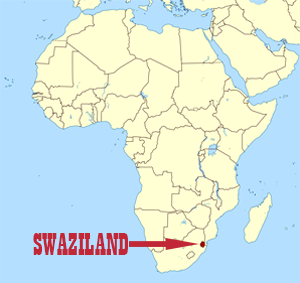 In
Swaziland, now officially called eSwatini, the
Southern Africa
Federation of the Disabled (SAFOD) works with its national
affiliate, the Federation of Organisations of Disabled People in
Swaziland (FODSWA), which coordinates all activities through its member
DPOs in the country. According to the 2007 Population and Housing
Census, the total population in Swaziland was 1, 018 449. People with
disabilities were estimated at 171 347.4 , representing 16,8 per cent of
the country’s population.
In
Swaziland, now officially called eSwatini, the
Southern Africa
Federation of the Disabled (SAFOD) works with its national
affiliate, the Federation of Organisations of Disabled People in
Swaziland (FODSWA), which coordinates all activities through its member
DPOs in the country. According to the 2007 Population and Housing
Census, the total population in Swaziland was 1, 018 449. People with
disabilities were estimated at 171 347.4 , representing 16,8 per cent of
the country’s population.
The most prevalent form of disability in Swaziland was seeing
disabilities followed by people with other disabilities.10 Out of the
171347 people with disabilities in Swaziland, 78 083 (46 per cent) had
seeing disabilities followed by a group classified as other forms of
disabilities at 47 691 (28 per cent). People with hearing disabilities
were 18 389 (11 per cent), while people having remembering/concentrating
disabilities were 6 832 (4 per cent). People with walking/climbing
disabilities were 17, 486 (10 per cent) and those with speaking
disabilities were only 2 666 (2 per cent).
eSwatini signed the
United Nations Convention on the Rights of Persons with Disabilities
(CRPD) in 2007 and ratified the Convention on 24 September 2012.
Swaziland has also ratified the treaty’s Optional Protocol which permits
the filing of individual complaints under the treaty by its residents.
At the Southern
Africa Disability Round Table Forum organized by SAFOD in
South Africa, from June 20 to 23, 2017, it was noted that the issues
affecting persons with disabilities were not being prioritized by the
Government because of poor negative attitude of the government
officials. Even the UNCRPD was not yet domesticated hence making it
difficult for the movement to hold government accountable. Continuous
advocacy by FODSWA was thus recommended to ensure government became
disability sensitive. It was further recommended that SAFOD should be
able to support in advocating for the rights of Persons with
disabilities in Swaziland.
One area that SAFOD is very interested to support FODSWA in is
assistive technology (AT). AT was one of the important components in the
surveys on Living Conditions among People with Activity Limitations
in Developing Countries so far carried out in nine of the SAFOD’s
ten countries in Southern Africa. These surveys are part of SAFOD’s
regional initiative to establish baseline data on living conditions
among people with disabilities in Southern Africa, coordinate by the by
SINTEF on
behalf of the
Norwegian Federation of
Organizations of Disabled Persons (FFO) and SAFOD.
The findings revealed that well over one third of assistive devices
were supplied by private sources. The second most common was Government
service (health service and other services) with close to one fourth,
while NGOs were third with 12.6 %. The category “other” most likely
comprised a mix of different sources.
SAFOD will continue to update this page with any new interesting information related to the AT situation in the country, or if you are a disability focused organization that has worked in eSwatini, or an independent researcher with any useful information about the AT situation the country, SAFOD would love to hear from you should you be willing to share whatever related information you may happen to possess. Please contact us here
